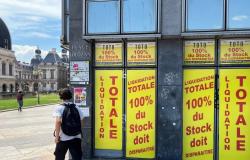Throughout the summer, discover the remarkable trees of Paris and Ile-de-France thanks to Yvan Hallouin and Laurent Madaleno. This week, close-up on the Ginko biloba at Parc Monceau in Paris, also called the tree of forty crowns.
“It’s a fossil plant, like ferns or horsetails: plants that have not evolved. The ginkgo even survived Hiroshima. One subject was barely 1 km from the epicenter. It burned completely and a year later its buds reappeared. This is why it has always had a strong symbolism in Asia, of hope, of renewal, of life. » No doubt, the Ginkgo Biloba of Parc Monceau is one of Laurent Madaleno’s favorite trees.
And it’s true that this tree planted in 1879 does not go unnoticed. By its stature of course, with its 22 meters in height and 3 meters in circumference but also by the history of this essence whose first traces date back 270 million years. This longevity means that today, the ginkgo can live for more than 1,000 years, as evidenced by numerous specimens, particularly in China.
The explanation of its nickname is given to us by the National Museum of Natural History: in 1780, Mr. de Pétigny, botanist from Montpellier, brought back to France for the first time five young ginkgoes acquired in London at the extraordinary price of forty crowns per month. foot, an extraordinary sum for the time!
To admire this remarkable tree and its bilobed leaves (with two lobes) which have inspired artists and jewelers, go to Parc Monceau in the 8th district of Paris. Returning via Avenue Hoche, you will have to take the first alley on the left and you will find it enthroned above a children’s play area.






